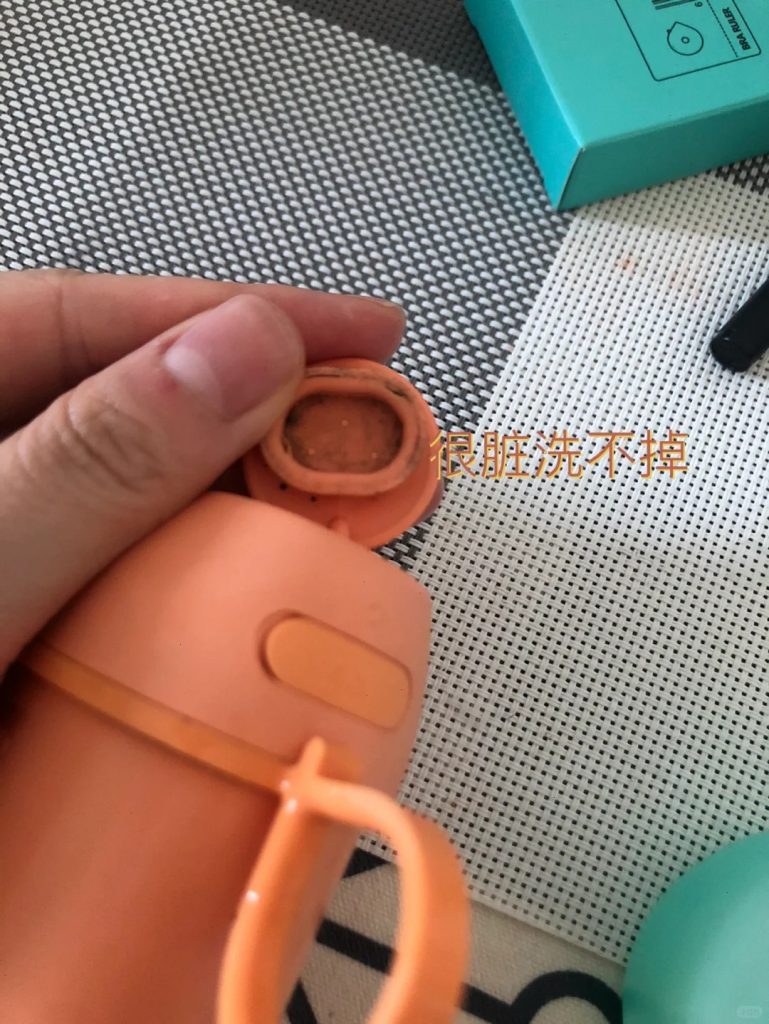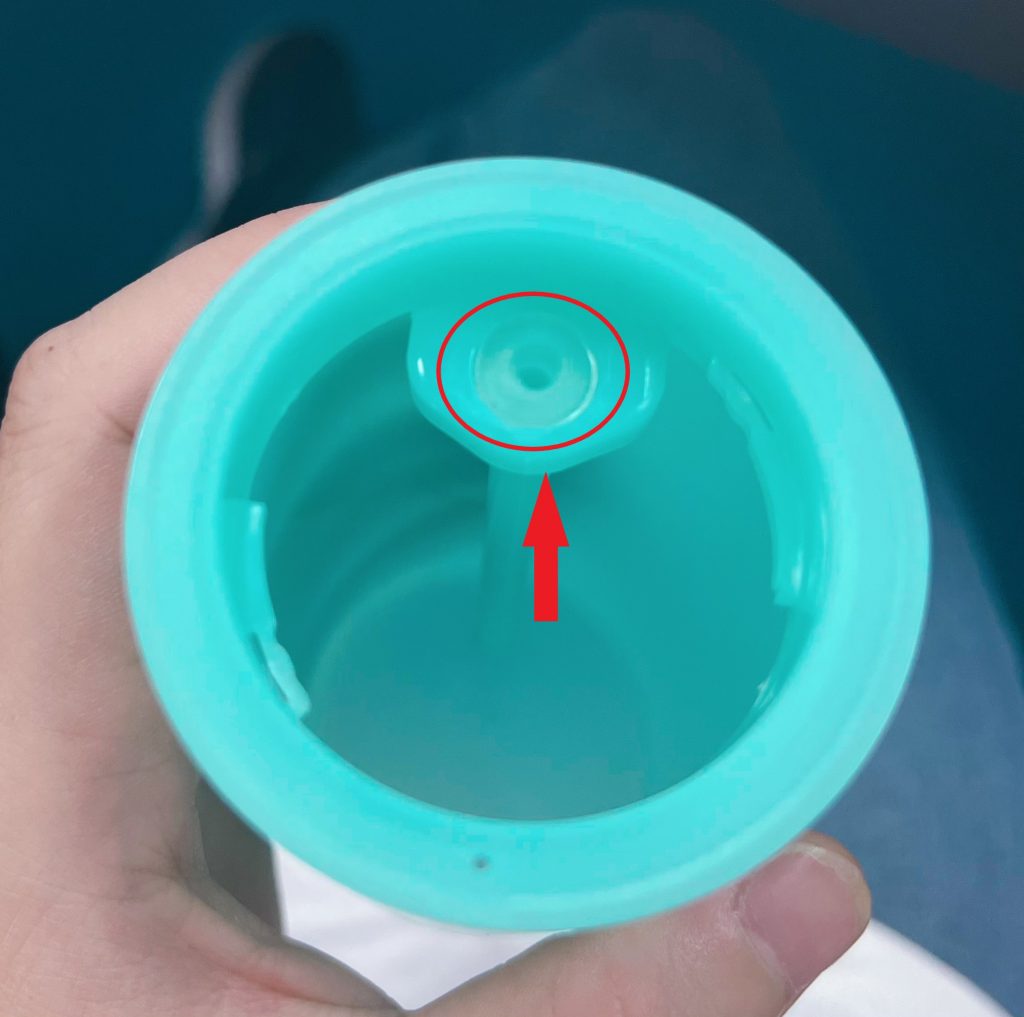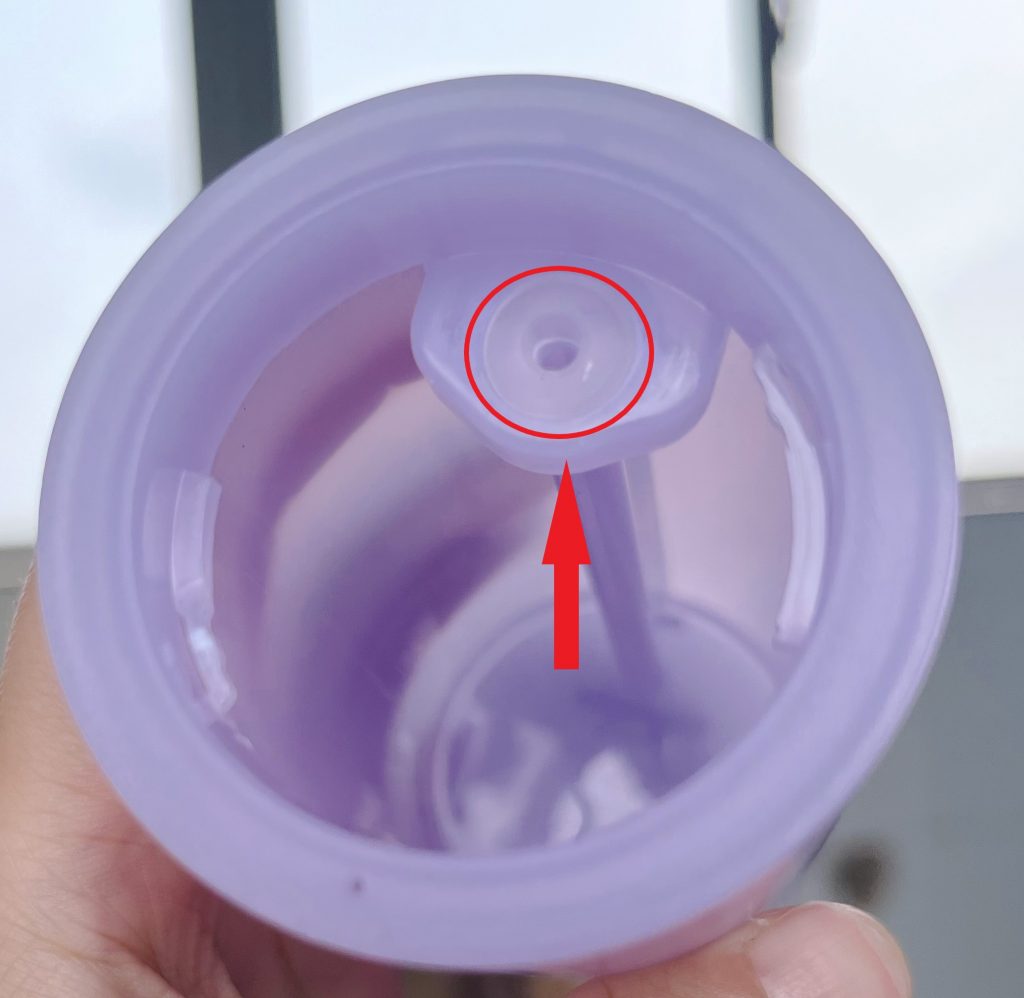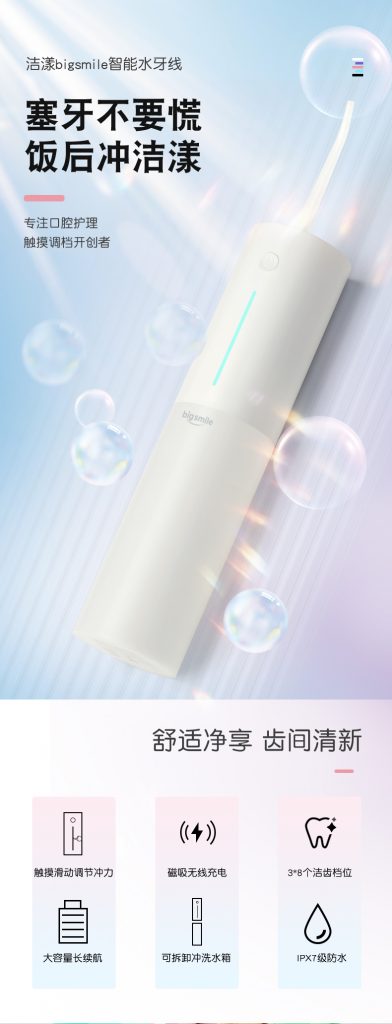Recently, due to work needs, I conducted a survey on the market situation of the domestic waterl flosser industry and found that many netizens have mentioned the problem of blackening and mold in the water flosser.
I also saw some photos posted by netizens, and her first reaction was: it looks too disgusting, it feels so dirty!At the same time, one cannot help but wonder: Will using water flosser, which has turned black and moldy, continue to flush teeth and transmit dirt to the oral cavity? Is it because the material used for water flosser is not good, causing the soft glue to turn black and moldy?

Regarding this issue, I believes that everyone is also curious.
In order to satisfy everyone’s and my own curiosity, I specifically consulted the R&D team of JIEYANG bigsmile. It was only then that I found out that they had also encountered this problem when using the water flosser. Recently, they are also researching how to completely solve the mold problem of water flosser without affecting the user experience.
Next, let me take everyone one by one to understand the causes of mold in the water flosser and some solutions:
Why does the water flosser turn black and moldy?
This starts with the material of the toothbrush, for example, the sealing ring soft glue at the connection of the water pipe in the JIEYANG bigsmile water flosser’s water tank is made of food grade TPE material.
TPE is a green and environmentally friendly material with high resilience, resistance to high and low temperatures, aging, and safety and non toxicity. TPE can be used at temperatures ranging from -50 º C to+110 º C, with uniform color and no fading.
That is to say, the sealing ring soft glue at the connection of JIEYANG bigsmile water pipe can be used in various weather conditions and has good stability, which is not easy to turn black.
However, in the process of use, if there is improper handling or usage, and it is affected by adverse factors, it can lead to discoloration, aging, blackening, and even mold on the surface.
Causes of blackening and mold on the water flosser
If the water flosser is corroded by mold during use, it may cause contamination and mold on the parts of the water flosser, resulting in blackening and mold growth. This is also the fundamental reason why most water flosser turn black and moldy.
Because after using the water flosser, we usually store it in a damp environment, such as the washbasin, toilet shelf, etc. These places are humid and cool, which is the environment that the majority of fungi like and live in.
Not to mention, after using the water flosser, we do not intentionally dry the water tank of the water flosser, which leads to residual water in the tank, continuous proliferation of bacteria in the water, and ultimately causes mold growth in the water flosser’s water tank or soft rubber parts, which is the root cause of the water flosser turning black and moldy.

Of course, there are also some other factors that can cause the water flosser to turn black. For example, long-term exposure to ultraviolet radiation or exposure to high temperature and humidity can cause discoloration, aging, and cracking of the water flosser, thereby affecting its service life.
How to prevent the water flosser from turning black and moldy?
When using a water flosser, we take the following effective measures to protect its performance and appearance, which can effectively prevent the punch from turning black and moldy.
1. Try to avoid storing the water flosser in high temperature and humidity environments to reduce chemical reactions and oxidation inside the material.
2. After using the water flosser, clean the residual water on the water flosser and water tank in a timely manner to avoid dampness and mold growth.
3. When using a water flosser, sterilized mouthwash, or cold/warm water, salt water, etc. can be used to reduce bacterial and fungal residues on the water tank and soft rubber surface of the water flosser.
4. After using the water flosser, use UV sterilization and other sterilization techniques to sterilize the water tank and other parts of the water flosser, eliminating black and mold from the root cause.

How to clean the blackened and moldy water flosser?
Some people may say that my water flosser has turned black and moldy, and it’s useless to prevent it. I just want to know how to clean up this situation?
Firstly, we can use salt water, baking soda powder, etc. to clean the water tank and the soft rubber parts of the water flosser. If it is just starting to turn black and moldy, and the situation is not serious, then this method can completely clean up the mold.
-1000x1024.jpg)
If your water flosser turns black and has severe mold, using this method can actually remove most of the mold, but some mold that penetrates deep into the soft glue cannot be removed. In this case, you have three options:
- If you can tolerate it, continue to use the water flosser with shallow stains;
- You can look for replaceable soft glue, replace it with a new one, and then continue using it.
- You can buy a new water flosser. However, the cost of this method is too high, and I thinks it is not worth it. When everyone is still using it in daily life, it is better to pay attention to preventing blackening and mold.
Of course, regarding the prevention of blackening and mold on the water flosser, JIEYANG bigsmile is also researching countermeasures. There are plans to add ultraviolet sterilization or other sterilization techniques to the JIEYANG bigsmile water flosser, so that users no longer need to worry about blackening and mold on thewater flosser.

I believe that JIEYANG bigsmile will give us a big surprise in the near future. Let’s wait and see!